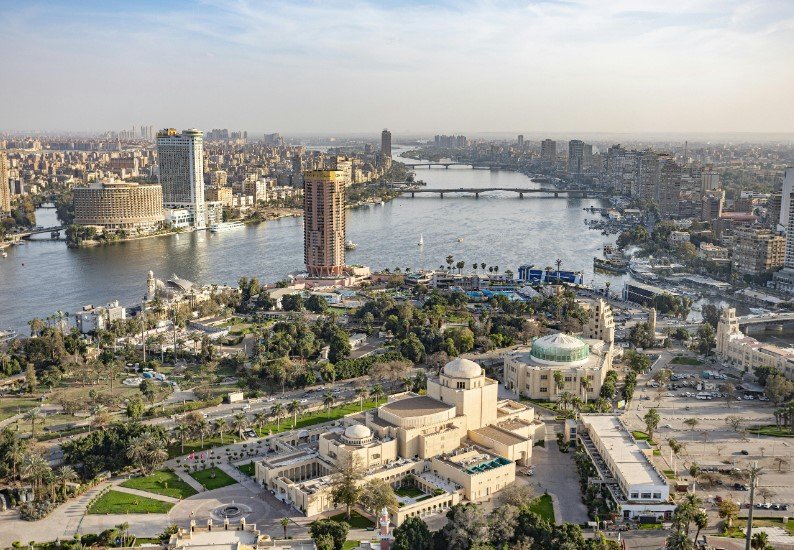Egypt’s foreign reserves have crossed the $50 billion threshold for the first time, marking a historic achievement announced by the Central Bank of Egypt. Prime Minister Mostafa Madbouly highlighted this growth during a press conference in Cairo on November 12, 2025, noting it reflects 38 straight months of increases and signals strong economic stability to global investors.
Historic Rise in Reserves
This milestone comes as Egypt’s net foreign reserves reached $50.07 billion by the end of October 2025, up from $48.7 billion earlier in the year. The steady climb shows the country’s ability to build buffers against external shocks, a key focus after recent economic challenges.
Officials credit this progress to smart policy moves, including currency liberalization in 2024 that encouraged formal inflows. The reserves now cover more than eight months of imports, giving Egypt a solid foundation for growth.

Madbouly stressed that this is not just a number but proof of real economic reforms working in practice.
Main Drivers of Growth
Several sectors have fueled this reserve surge, moving away from short-term capital to sustainable sources. Tourism revenues hit $15.3 billion in 2024 and are projected to rise 15 percent in 2025, thanks to better infrastructure and marketing.
Remittances from Egyptians abroad jumped 77 percent year-on-year in the first 10 months of fiscal 2024-25, reaching $29 billion. Exports and information and communications technology also played big roles, with manufacturing adding to the mix.
Here are the key contributors:
-
-
- Tourism: Strong recovery with new campaigns drawing visitors to sites like the pyramids and Red Sea resorts.
- Remittances: Shift to official channels boosted inflows, especially in April 2025 with a 39 percent jump.
- Exports: Growth in goods like textiles and agriculture, supported by trade deals.
- ICT: Expanding digital services bringing in foreign earnings.
-
These elements show a diversified approach to building reserves.
Suez Canal Revenues Rebound
Suez Canal earnings, a vital income source, are bouncing back after disruptions. Revenues dipped in recent years due to global shipping issues, but Madbouly noted they started growing again in 2025.
The canal brought in about $9.4 billion in 2022, and recent stability in the region could push it higher. With fewer attacks on shipping routes, traffic is picking up, which helps Egypt’s trade balance.
This rebound ties into broader regional calm, which Madbouly said would attract more investments and tourists.
Experts see this as a sign that Egypt’s economy is adapting well to global changes.
Push for Industrial Localisation
The government is focusing on local industry to cut imports and boost jobs. A major step is the new car factory, with a $150 million investment set to produce up to 100,000 vehicles a year.
This project aims to reduce reliance on foreign cars and create thousands of jobs. It fits into a wider plan for industrial growth, including tech and manufacturing hubs.
Madbouly linked this to the reserve growth, saying such investments draw long-term foreign funds and strengthen the economy.
Broader Economic Stability
This reserve high assures international bodies like the IMF and World Bank of Egypt’s progress. The country has implemented reforms like tax changes and privatization, helping it rank as Africa’s second-largest economy.
Inflation is easing, and unemployment is dropping, though challenges like debt remain. The World Bank notes Egypt’s recovery is on track, supported by these inflows.
| Economic Indicator | 2024 Value | 2025 Projection |
|---|---|---|
| Foreign Reserves | $41.1 billion | $50.07 billion |
| Tourism Revenue | $15.3 billion | $17.6 billion (est.) |
| Remittances | $29 billion (partial) | $35 billion (est.) |
| Suez Canal Revenue | $8.5 billion (est.) | $9.8 billion (est.) |
This table highlights the upward trends driving stability.
Analysts say these figures position Egypt as an attractive spot for investors in emerging markets.
Future Outlook and Challenges
Looking ahead, Madbouly is optimistic about continued growth if regional peace holds. Plans include more infrastructure projects and trade pacts to keep inflows strong.
However, global risks like oil price swings or geopolitical tensions could test this progress. The government aims to diversify further, focusing on green energy and tech.
Egypt’s story shows how targeted reforms can turn challenges into opportunities for a developing economy.
What do you think about Egypt’s economic rebound? Share your thoughts in the comments and spread the word to keep the conversation going.
